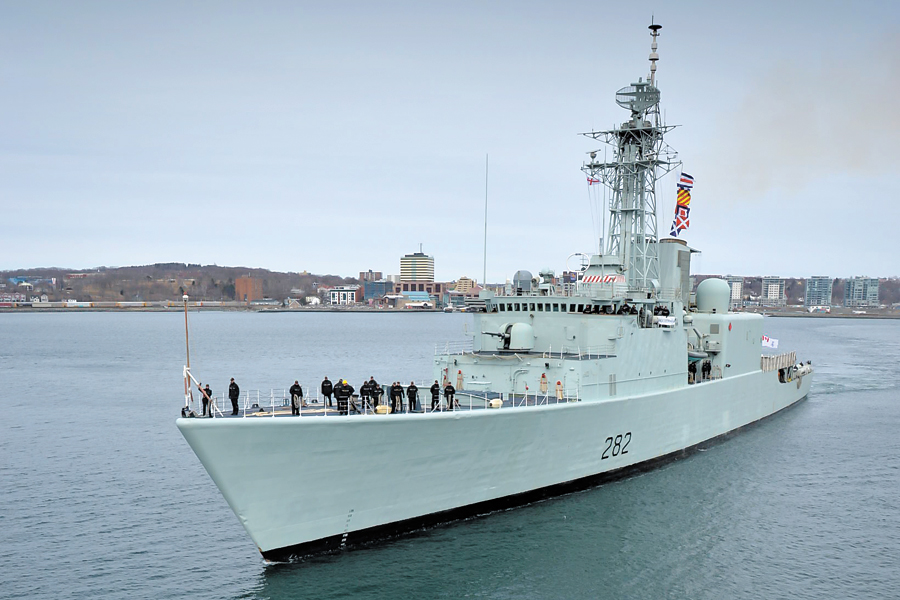HMCS Athabaskan takes final salute
By Lookout on Mar 13, 2017 with Comments 0

HMCS Athabaskan pulls into port at Halifax Dockyard for the last time on March 10. The last of the Iroquois-class destroyers was paid off after more than 44 years of service. Photo by MCpl C.A. Stephen, Formation Imaging Services Halifax
DND ~
HMCS Athabaskan was paid off during a ceremony at HMC Dockyard in Halifax on Friday.
Athabaskan, the last of the four Iroquois-class Area Air Defence destroyers, served the Royal Canadian Navy (RCN) with distinction for more than 44 years.
“Today we celebrate the end of an era,” said Vice-Admiral Ron Lloyd, Commander of the Royal Canadian Navy. “When Canada put this ship into service the technological achievements were so impressive that the Tribals were referred to as the ‘sisters of the space age’. For those of us fortunate to have sailed in these ships we celebrate the important leadership role that Athabaskan, and her sister ships, fulfilled in the defence of Canada and in support of partners and allies. Canadians can proudly reflect on Canada’s response to the occupation of Kuwait, the terrorist attacks of 9/11, Hurricane Katrina, and the devastating earthquake in Haiti. I know that those of us serving today, are proud to continue to follow in the wake of all those who have so brilliantly served in HMCS Athabaskan during the last 44 years. We stand here today as equally committed and dedicated as those who walked aboard her on the day of her commissioning.”
The Iroquois Class was a made-in-Canada solution to the defence and security challenges of the Cold War and post-Cold war era of the late 20th Century. They introduced state-of-the- art Canadian sonar technology to undersea surveillance, and perfected the combat operations of two large maritime helicopters from each of their flight decks.
Under the auspices of the National Shipbuilding Strategy, the RCN is in the midst of one of the most comprehensive periods of fleet modernization and renewal in its modern history. Despite the retirement of the Iroquois Class and its long-range air defence capability, the modernized Halifax-class Canadian Patrol Frigates, Kingston-class Maritime Coastal Defence Vessels, and Victoria-class submarines are the bridge to the future fleet.
These platforms will sustain the role of the RCN in the defence of Canada and protection of sovereignty on three oceans. Moreover, the RCN will continue to provide the Government of Canada globally deployable maritime force options that serve the national interest in defence, security, and capacity building in foreign states and humanitarian aid. It is with great anticipation that the navy awaits the first of the DeWolf-class Arctic Offshore Patrol Ships and a leased solution from industry for the provision of an underway replenishment ship to support the long distance deployments of a navy widely recognized for its global reach and effect. It is the Canadian Surface Combatant, however, that will return the navy to its full potential, just as the Tribal-class destroyers did during their remarkable era of service from 1970 to 2017.
On Friday the sailors of Athabaskan gave a last cheer to the ship and marched off for the final time, followed by the Commanding Officer being piped ashore as the commissioning pennant, Jack, and Ensign were hauled down and the port flag hoisted. A fitting tribute to a warship and its’ sailors who served with distinction.
Filed Under: Top Stories
About the Author:





